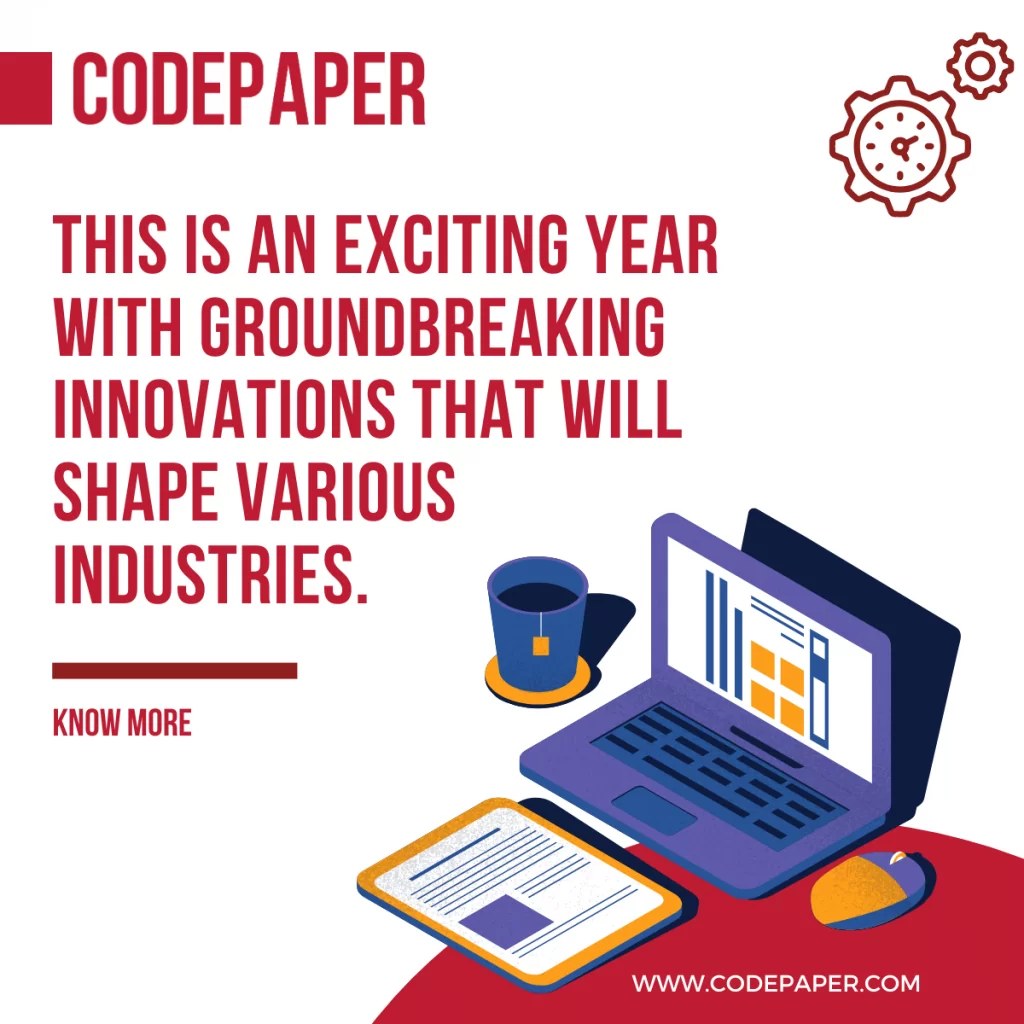In this blog, we explored the top ten groundbreaking innovations technology trends for 2023, including edge computing, artificial intelligence (AI), quantum computing, 5G technology, the Internet of Things (IoT), augmented reality (AR), and virtual reality (VR), and cybersecurity.
These trends will revolutionize the tech landscape and have a significant impact on how we live and work. Stay tuned for these exciting advancements in the world of technology in 2023!
Artificial Intelligence (AI)
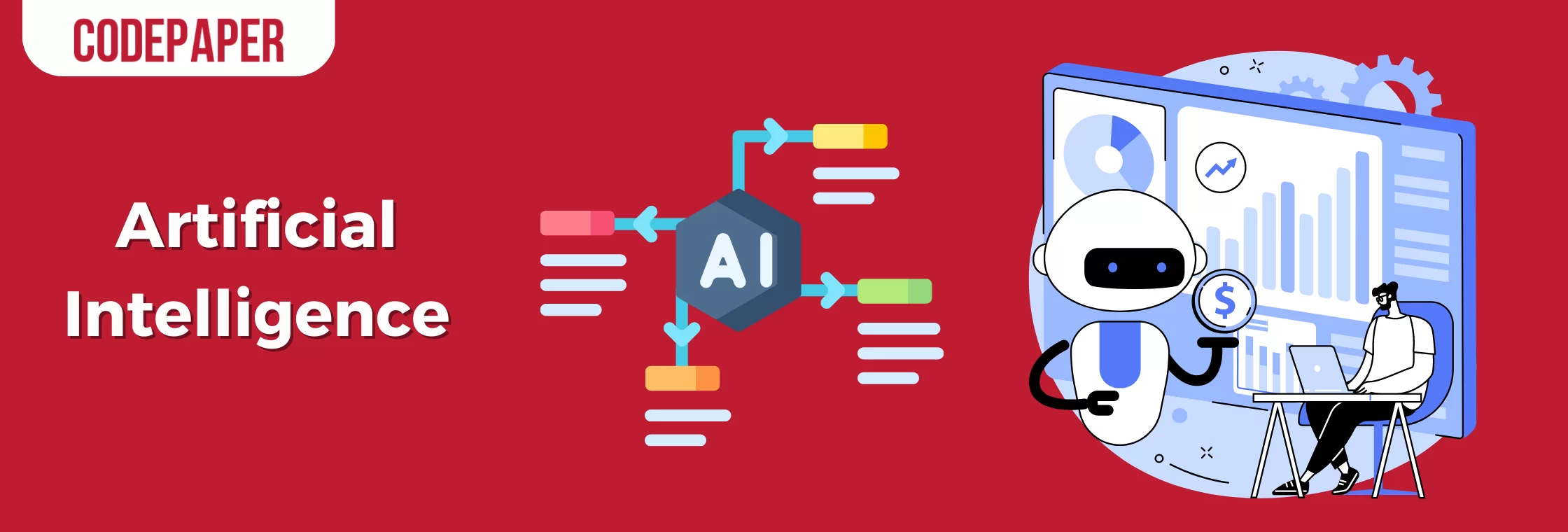
AI has been a prominent trend in recent years, and it will continue to make waves in 2023. With advancements in machine learning, natural language processing, and computer vision, AI will be integrated into various applications and systems, ranging from virtual assistants and chatbots to autonomous robots and smart devices. AI-powered technologies will enhance automation, personalization, and decision-making across industries, making it a game-changer in the tech landscape.
One of the key applications of AI is natural language processing (NLP), which involves enabling computers to understand, interpret, and respond to human language.
ChatGPT and AutoGPT are two examples of language models developed by OpenAI, a leading AI research organization.
ChatGPT is designed to generate human-like text responses in a conversational manner, making it suitable for chatbots and virtual assistants.
It can engage in interactive conversations, provide information, answer questions, and even hold meaningful dialogues with users.
AutoGPT, on the other hand, is a variant of ChatGPT that is fine-tuned to generate code snippets and programming-related content. It is specifically trained to assist with coding tasks, such as writing code snippets, providing explanations, and suggesting solutions to programming problems.
Both ChatGPT and AutoGPT utilize deep learning techniques, specifically a type of neural network called a transformer, which allows them to process and generate text sequences with high levels of accuracy and coherence. These language models have the potential to greatly enhance the capabilities of chatbots, virtual assistants, and other AI-powered systems by enabling them to communicate effectively and efficiently with users, understand their needs, and provide relevant responses.
However, it’s important to note that as with any AI technology, there are ethical considerations to keep in mind, such as ensuring user privacy, avoiding biases in generated content, and being transparent about the limitations of the technology.
As AI continues to advance, it will undoubtedly play a significant role in shaping the future of communication and interaction between humans and machines.
Edge Computing

Edge computing, also known as fog computing, is set to gain momentum in 2023. With the proliferation of smart devices and the need for real-time data processing, edge computing brings computing capabilities closer to the source of data generation, reducing latency and enabling faster decision-making. From autonomous vehicles to smart cities, edge computing will enable efficient data processing and analysis at the edge of the network, leading to improved performance and enhanced user experiences.
There are several advantages of edge computing that make it a compelling technology trend for 2023:
Reduced Latency
Edge computing enables real-time data processing, which is critical for applications that require low latency, such as autonomous vehicles, industrial automation, and remote healthcare. By processing data at the edge of the network, edge computing can significantly reduce the time it takes to analyze data and generate insights, leading to quicker decision-making and improved overall system performance.
Increased Efficiency
Edge computing can reduce the amount of data that needs to be transmitted to the cloud, which can result in cost savings and reduced bandwidth requirements. By processing and filtering data at the edge, only relevant data is sent to the cloud for further analysis, reducing the amount of unnecessary data that needs to be transmitted and stored.
Improved Security
Edge computing can enhance data security by processing sensitive data locally, rather than sending it to a central data center. This can help protect against data breaches and privacy violations, as sensitive data can be processed and stored locally on edge devices, reducing the risk of data exposure during transit.
Scalability
Edge computing allows for distributed computing resources, which can be easily scaled up or down depending on the needs of the application. This flexibility makes edge computing suitable for a wide range of use cases, from small-scale deployments to large-scale industrial applications.
Offline Capabilities
Edge computing can enable offline capabilities for applications that need to function even when connectivity to the cloud is limited or unavailable. This is particularly useful in remote or rural areas where internet connectivity may be unreliable.
5G Technology

The fifth generation of wireless technology, commonly known as 5G, will continue to revolutionize the telecommunications industry in 2023. With its lightning-fast speeds, low latency, and high bandwidth, 5G will enable innovations such as autonomous vehicles, smart cities, and the internet of things (IoT) to flourish. 5G will also enhance mobile gaming, virtual reality, and augmented reality experiences, ushering in a new era of connectivity and communication.
Here’s a closer look at 5G Technology:
Faster Speeds
5G technology is designed to provide significantly faster speeds compared to previous generations of wireless technology. With speeds potentially reaching up to 100 times faster than 4G, 5G can enable high-bandwidth applications such as streaming high-definition video, virtual reality (VR), augmented reality (AR), and other data-intensive tasks.
Lower Latency
5G technology is expected to drastically reduce latency, which is the delay between sending and receiving data. With ultra-low latency of just a few milliseconds, 5G can enable real-time applications that require near-instantaneous response times, such as autonomous vehicles, remote surgery, and smart city applications.
Increased Connectivity
5G technology is designed to connect not only smartphones and computers but also a vast range of devices and objects, forming the foundation of the Internet of Things (IoT). This can enable seamless communication between devices, leading to improved automation, efficiency, and productivity in various industries such as manufacturing, transportation, agriculture, and healthcare.
Enhanced Reliability
5G technology is expected to provide increased reliability and network stability, making it more suitable for critical applications such as autonomous vehicles and remote surgeries. This can enable new use cases that require uninterrupted connectivity and real-time data processing.
Enablement of New Technologies
5G technology is expected to be a catalyst for the development and adoption of other emerging technologies such as AI, edge computing, and smart cities. The high speeds, low latency, and increased connectivity of 5G can enable these technologies to reach their full potential, unlocking new possibilities and driving innovation in various industries.
Internet of Things (IoT)
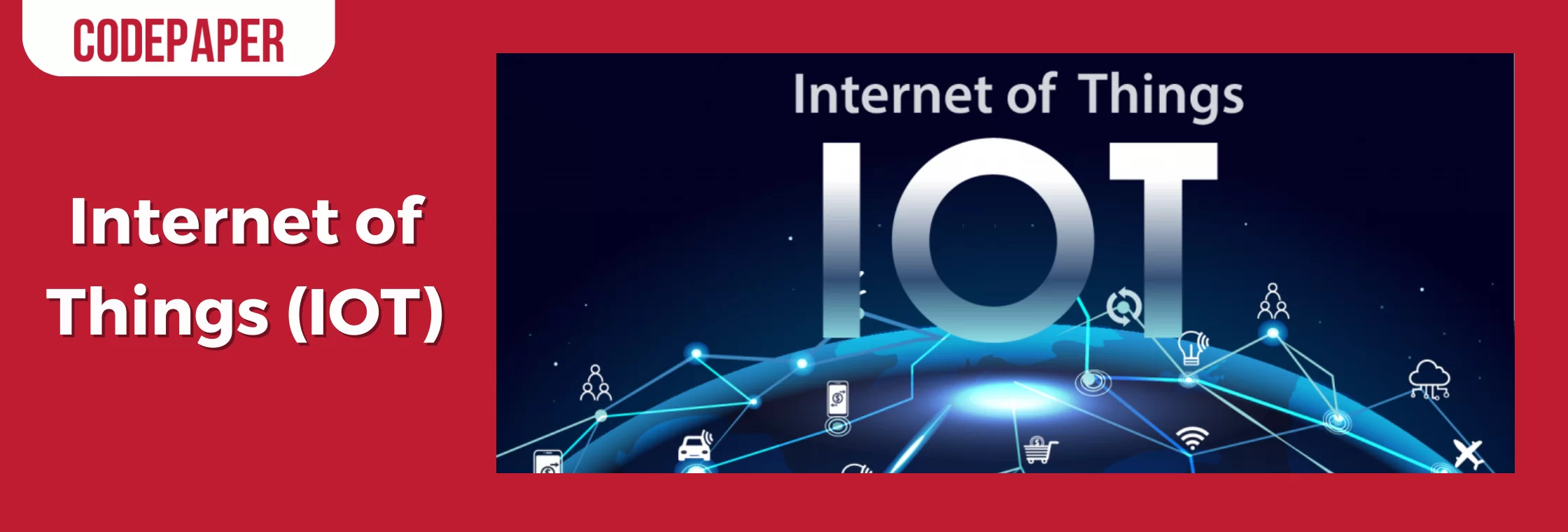
The IoT has already transformed the way we interact with technology, and it will continue to expand in 2023. With the increasing number of connected devices, the IoT will enable seamless communication and data exchange between devices, leading to improved automation, efficiency, and convenience. From smart homes and wearables to industrial automation and smart agriculture, the IoT will continue to disrupt industries and pave the way for a more connected future.
Here’s a closer look at IoT:
Increased Connectivity
The IoT is all about connectivity. In 2023, we can expect to see even more devices becoming connected, allowing for seamless communication and data sharing. This increased connectivity can have a significant impact on various industries, such as healthcare, transportation, smart cities, agriculture, and logistics, as it enables more efficient processes, better decision-making, and improved customer experiences.
Edge Computing
Edge computing is a distributed computing model that brings data processing and analysis closer to the source of data generation, instead of sending all data to a central cloud server. This approach can help reduce latency, increase efficiency, and improve security in IoT deployments. In 2023, we can expect to see further advancements in edge computing technologies, as they become more integral to IoT deployments, enabling real-time data processing and analysis at the edge of the network.
Artificial Intelligence (AI) and Machine Learning (ML)
AI and ML technologies are expected to play a crucial role in IoT in 2023. With the massive amounts of data generated by IoT devices, AI and ML can be used to analyze and derive meaningful insights from the data, enabling predictive maintenance, anomaly detection, and automated decision making. AI and ML can also enable more personalized and context-aware experiences for users, leading to improved efficiency, safety, and convenience in IoT applications.
Security and Privacy
As the number of connected devices increases, so does the concern for security and privacy. In 2023, we can expect to see increased focus on securing IoT devices, networks, and data. This may include the adoption of advanced encryption methods, multi-factor authentication, and blockchain-based solutions for enhanced security. Additionally, there may be more regulatory efforts to ensure the privacy of user data and protect against potential data breaches in IoT deployments.
Industry-specific Applications
IoT has already been adopted in various industries, and in 2023, we can expect to see further industry-specific applications. For example, in healthcare, IoT can enable remote patient monitoring, smart wearables for health tracking, and connected medical devices for improved patient care. In agriculture, IoT can enable smart farming techniques for optimized resource usage and increased crop yields. In logistics, IoT can enable real-time tracking and monitoring of goods for enhanced supply chain management. The possibilities are vast, and we can expect to see more customized and tailored IoT solutions for specific industries.
Augmented Reality (AR) and Virtual Reality (VR)
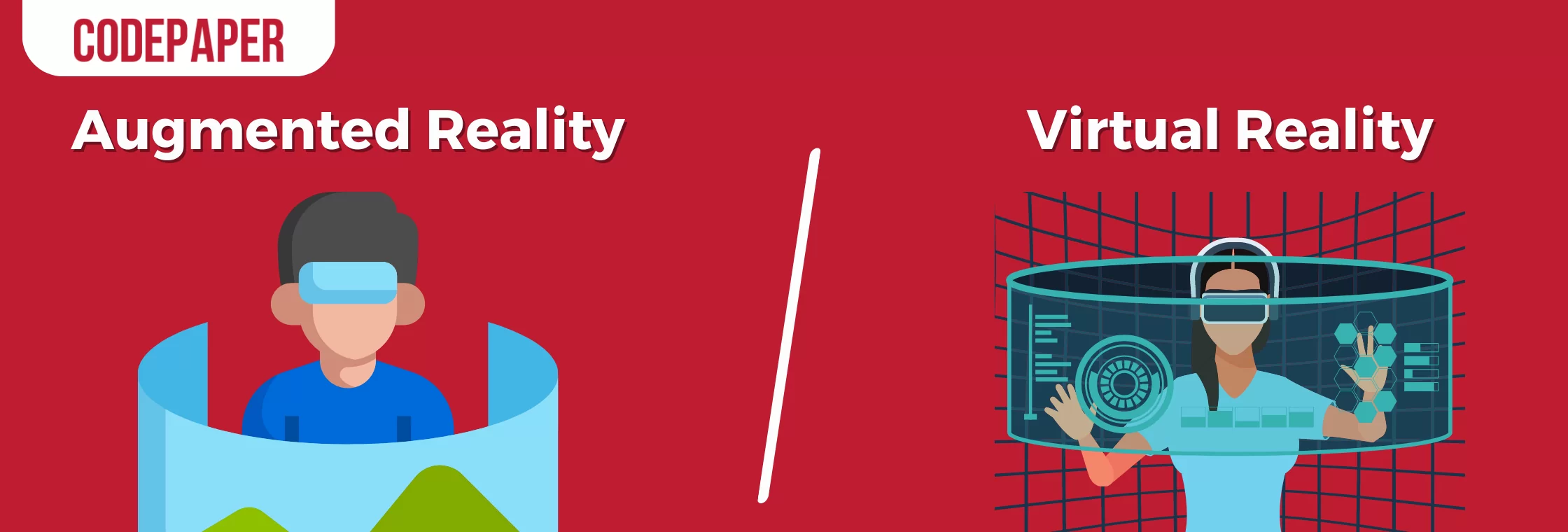
AR and VR technologies will continue to gain traction in 2023, transforming industries such as gaming, entertainment, healthcare, and education. AR will enable immersive experiences by overlaying digital content onto the real world, while VR will provide fully immersive virtual experiences. Both AR and VR will create new possibilities for communication, training, and entertainment, revolutionizing the way we interact with digital content.
Here’s a deeper look into AR and VR:
Augmented Reality (AR)
AR is a technology that overlays digital content onto the real world, enhancing the user’s perception of the physical environment. AR can be experienced through various devices such as smartphones, tablets, smart glasses, and headsets. AR has numerous applications across industries, including gaming, entertainment, education, retail, healthcare, and industrial training. In 2023, we can expect to see further advancements in AR technologies, more innovative use cases, and increased adoption in various industries.
Virtual Reality (VR)
VR is a technology that creates a fully immersive, computer-generated environment that users can experience and interact with through headsets or other devices. VR can transport users to virtual worlds, allowing them to explore, create, and interact with digital objects in a simulated environment. VR has applications in gaming, entertainment, training, simulations, and therapy. In 2023, we can expect to see continued advancements in VR hardware, software, and content, as well as increased adoption in gaming, education, and other industries.
Mixed Reality (MR)
Mixed Reality (MR) is a combination of both AR and VR, where digital content is overlaid onto the real world, but users can also interact with and manipulate virtual objects in a realistic manner. MR blurs the line between the physical and digital worlds, allowing for more seamless and interactive experiences. MR has applications in industries such as architecture, design, manufacturing, and engineering. In 2023, we can expect to see further developments in MR technologies, more innovative use cases, and increased adoption in industries where merging physical and digital worlds can provide significant benefits.
Advancements in Hardware
Both AR and VR technologies rely heavily on hardware advancements to provide more immersive and realistic experiences. In 2023, we can expect to see improvements in AR and VR headsets, devices, and sensors, with increased emphasis on portability, comfort, and performance. This could lead to more affordable and accessible AR and VR experiences for consumers and businesses alike.
Content Creation and Applications
Content creation is a critical aspect of AR and VR technologies. In 2023, we can expect to see the development of more compelling and interactive AR and VR content, including games, simulations, training modules, educational applications, and other creative experiences. The use of AR and VR in industries such as healthcare, retail, education, and entertainment is expected to increase, providing new ways for businesses to engage with their customers and users.
Social and Collaborative Experiences
AR and VR technologies are also expected to advance in terms of social and collaborative experiences. In 2023, we can expect to see more interactive and immersive social platforms and applications that allow users to connect, communicate, and collaborate in virtual environments. This could potentially revolutionize the way people interact, work, and socialize, with virtual spaces becoming more integrated into our daily lives.
Quantum Computing
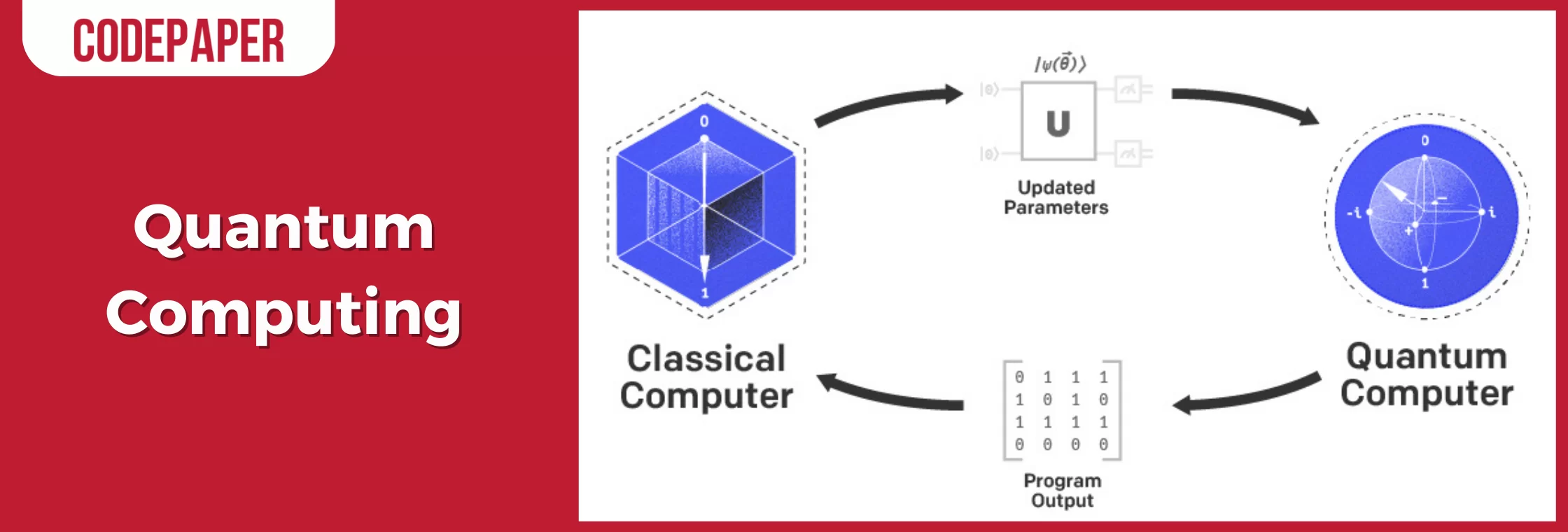
Quantum computing, the cutting-edge technology that utilizes quantum mechanics to perform computations, is set to reach new heights in 2023. Quantum computers have the potential to solve complex problems that are currently impossible for classical computers, such as simulating chemical reactions, optimizing logistics, and cracking encryption codes. As quantum computing continues to progress, it will have a significant impact on industries such as healthcare, finance, and cybersecurity
Here are some key aspects of quantum computing that make it a top technology trend for 2023:
Quantum Bits (Qubits)
Quantum computers use qubits as the fundamental unit of information, which are unlike classical bits that can be either in a state of 0 or 1. Qubits can exist in a state called “superposition,” allowing them to represent multiple states simultaneously. This unique property of qubits enables quantum computers to process information in parallel, potentially leading to exponentially faster computations for certain tasks.
Quantum Entanglement
Quantum entanglement is a phenomenon where two or more qubits become interconnected, such that the state of one qubit is dependent on the state of another, even when separated by large distances. This property of quantum computing can be leveraged for secure communication and cryptography, which has the potential to revolutionize data encryption and cybersecurity.
Quantum Superposition
Quantum superposition is another key property of quantum computing that allows qubits to be in multiple states simultaneously. This property enables quantum computers to perform computations in parallel, which can greatly speed up certain computations compared to classical computers.
Quantum Gates
Quantum gates are analogous to classical logic gates, but they operate on qubits instead of classical bits. These gates can be used to manipulate the states of qubits, enabling quantum computers to perform quantum operations on the input data.
Applications
Quantum computing has the potential to revolutionize various industries, including drug discovery, materials science, cryptography, optimization, finance, and artificial intelligence. Quantum computers can potentially solve complex problems that are currently infeasible for classical computers, leading to breakthroughs in scientific research, optimization of complex systems, and advancements in machine learning and AI.
Cybersecurity
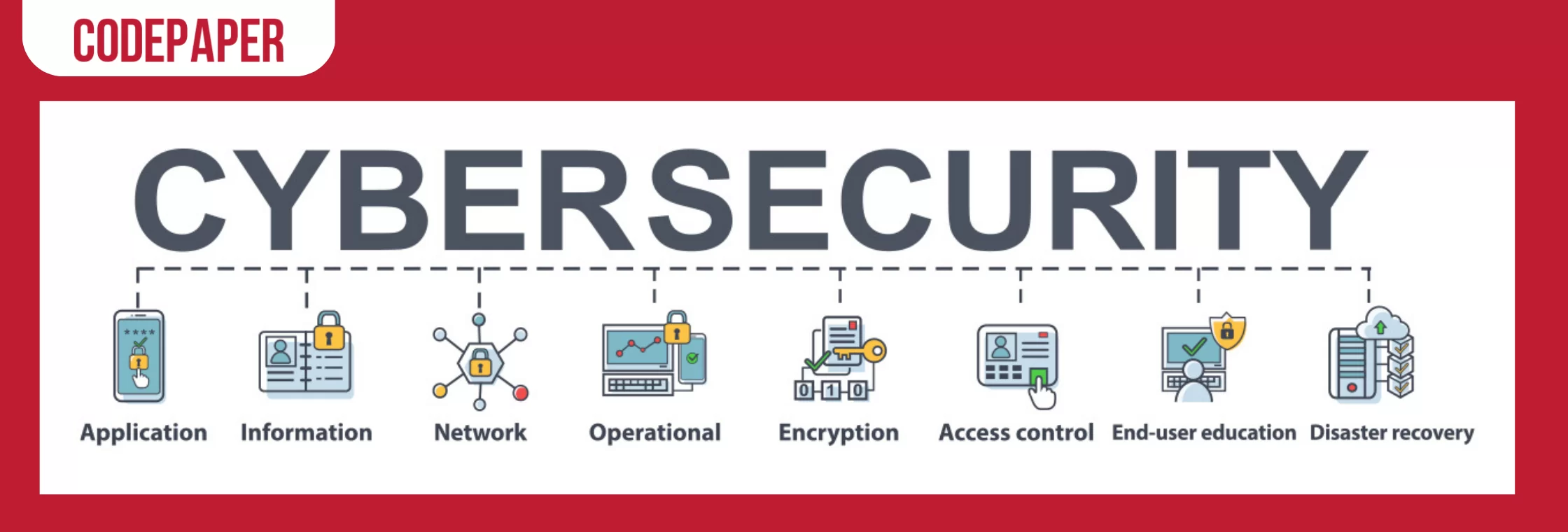
As technology advances, so do the threats and challenges associated with cybersecurity. With the increasing reliance on technology for various aspects of our lives, cybersecurity will remain a top priority in 2023. From protecting personal data to securing critical infrastructure, businesses and individuals alike will invest in it.
Here are some key aspects of cybersecurity:
Threat Landscape
The cybersecurity threat landscape continues to evolve rapidly, with cyber threats becoming more sophisticated, persistent, and widespread. In 2023, we can expect to see new types of cyber threats, such as advanced persistent threats (APTs), ransomware, and supply chain attacks, posing significant risks to businesses, governments, and individuals. The threat actors behind these attacks may include cybercriminals, nation-states, hacktivists, and insiders.
Zero Trust Architecture
Zero Trust is an approach to cybersecurity that assumes no trust by default and requires verification and authorization for every access request, regardless of the user’s location, device, or network. Zero Trust architecture is gaining prominence as a proactive defense strategy, and in 2023, we can expect to see increased adoption of Zero Trust principles in organizations. This may include implementing multi-factor authentication, continuous monitoring, least privilege access, and micro-segmentation to enhance security posture.
Cloud Security
Cloud computing has become an integral part of modern IT infrastructure, and securing cloud environments is crucial. In 2023, we can expect to see a continued focus on cloud security, including securing cloud data, applications, and infrastructure. This may involve implementing strong access controls, encrypting data at rest and in transit, regular security assessments, and leveraging cloud-native security solutions.
Artificial Intelligence (AI) and Machine Learning (ML) in Cybersecurity
AI and ML technologies are increasingly being utilized in cybersecurity for threat detection, prevention, and response. These technologies can analyze large amounts of data, identify patterns, and detect anomalies to detect and respond to cyber threats in real-time. In 2023, we can expect to see further advancements in AI and ML-based cybersecurity solutions, including predictive threat intelligence, automated threat hunting, and autonomous incident response.
Employee Awareness and Training
Human error remains one of the leading causes of cybersecurity breaches. In 2023, we can expect to see increased emphasis on employee awareness and training programs to educate employees about cybersecurity best practices, such as identifying phishing attacks, using strong passwords, and being cautious with sharing sensitive information. This may include regular cybersecurity training sessions, phishing simulations, and awareness campaigns to promote a cybersecurity-aware culture within organizations.
Don’t let cyberattacks harm your business – Get in touch with us to discuss website security Or Contact us to Learn more



